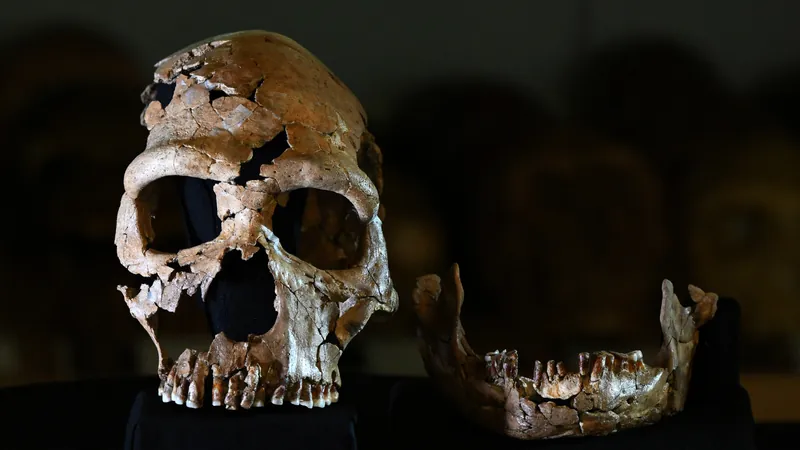
Revealing the Hidden Connection: Neanderthal DNA and a Dangerous Brain Disorder
2025-07-23
Author: Jia
A groundbreaking new study suggests that an ancient interbreeding between Neanderthals and modern humans may have passed down genes that contribute to a serious brain condition known as Chiari malformation type I.
What is Chiari Malformation Type I?
This disorder affects the lower region of the cerebellum, a critical section of the brain responsible for motor control. In affected individuals, the cerebellum protrudes through a hole at the base of the skull, potentially causing severe symptoms such as headaches, neck pain, and dizziness. In extreme cases, it can be life-threatening.
Mild to Severe Treatment Options
For those with mild symptoms, treatment may include muscle relaxants. However, for severe cases, surgical intervention may be necessary to remove sections of bone, alleviating pressure and allowing the brain to properly fit within the skull.
A Hidden Epidemic?
Discovered in the 1800s, Chiari malformation type I is believed to affect approximately 1 in 1,000 people, but newer imaging studies suggest the prevalence could be as high as 1 in 100, with many cases going unnoticed due to the lack of prominent symptoms.
Neanderthal Influence on Modern Skulls?
The condition arises when the occipital bone at the back of the skull is too small to accommodate the brain, raising questions about the genetic factors that lead to this size mismatch. A 2013 study proposed that interbreeding with Neanderthals could be the culprit, as modern genomes show 1.5% to 2% Neanderthal DNA among non-Africans.
Analyzing Skull Shapes
To further investigate this theory, researchers examined 3D CT scans of skulls from 103 individuals—46 with Chiari malformation and 57 without. Surprisingly, the skulls of those affected were more similar in shape to Neanderthals than to those without the disorder.
A Step Toward Understanding
According to study co-author Mark Collard, these findings bring us closer to unraveling the causes of Chiari malformation type I. He emphasized that a clear understanding of causation is essential for better management of the condition.
Next Steps for Research
While the study is promising, Collard cautions that it does not conclusively link Neanderthal genes to the disorder. Future research could expand the sample size, particularly focusing on fossil records and data from Africa, where Neanderthal DNA is less prevalent.
Screening for Genetic Risk?
If a definitive connection is established, incorporating gene screening for Chiari malformation type I into early childhood health assessments could be beneficial. This would allow for proactive monitoring and management for those at higher risk.
The full findings of this insightful study were published on June 27 in the journal Evolution, Medicine, and Public Health, potentially altering our understanding of genetic disorders and their fascinating, ancient roots.



 Brasil (PT)
Brasil (PT)
 Canada (EN)
Canada (EN)
 Chile (ES)
Chile (ES)
 Česko (CS)
Česko (CS)
 대한민국 (KO)
대한민국 (KO)
 España (ES)
España (ES)
 France (FR)
France (FR)
 Hong Kong (EN)
Hong Kong (EN)
 Italia (IT)
Italia (IT)
 日本 (JA)
日本 (JA)
 Magyarország (HU)
Magyarország (HU)
 Norge (NO)
Norge (NO)
 Polska (PL)
Polska (PL)
 Schweiz (DE)
Schweiz (DE)
 Singapore (EN)
Singapore (EN)
 Sverige (SV)
Sverige (SV)
 Suomi (FI)
Suomi (FI)
 Türkiye (TR)
Türkiye (TR)
 الإمارات العربية المتحدة (AR)
الإمارات العربية المتحدة (AR)